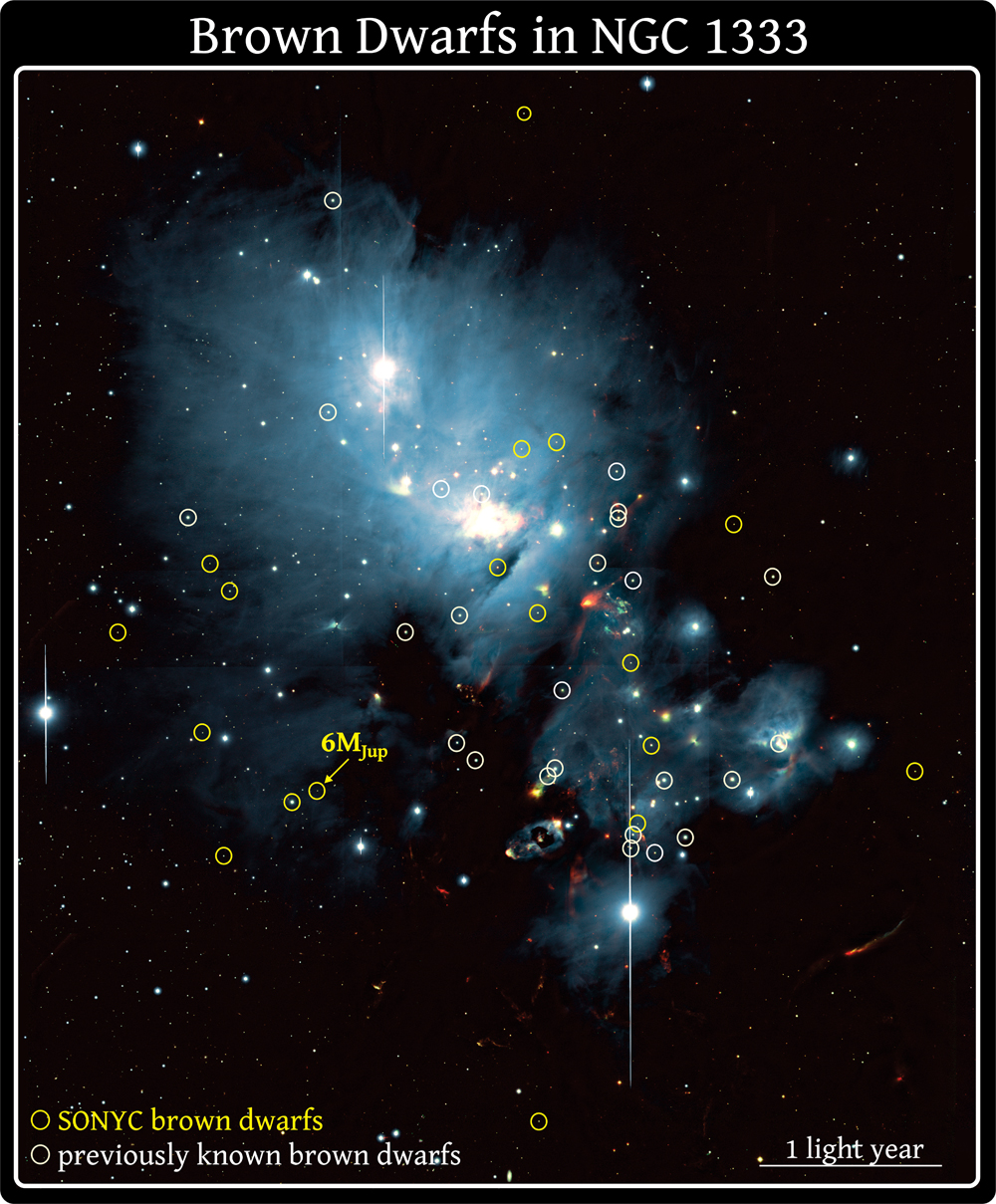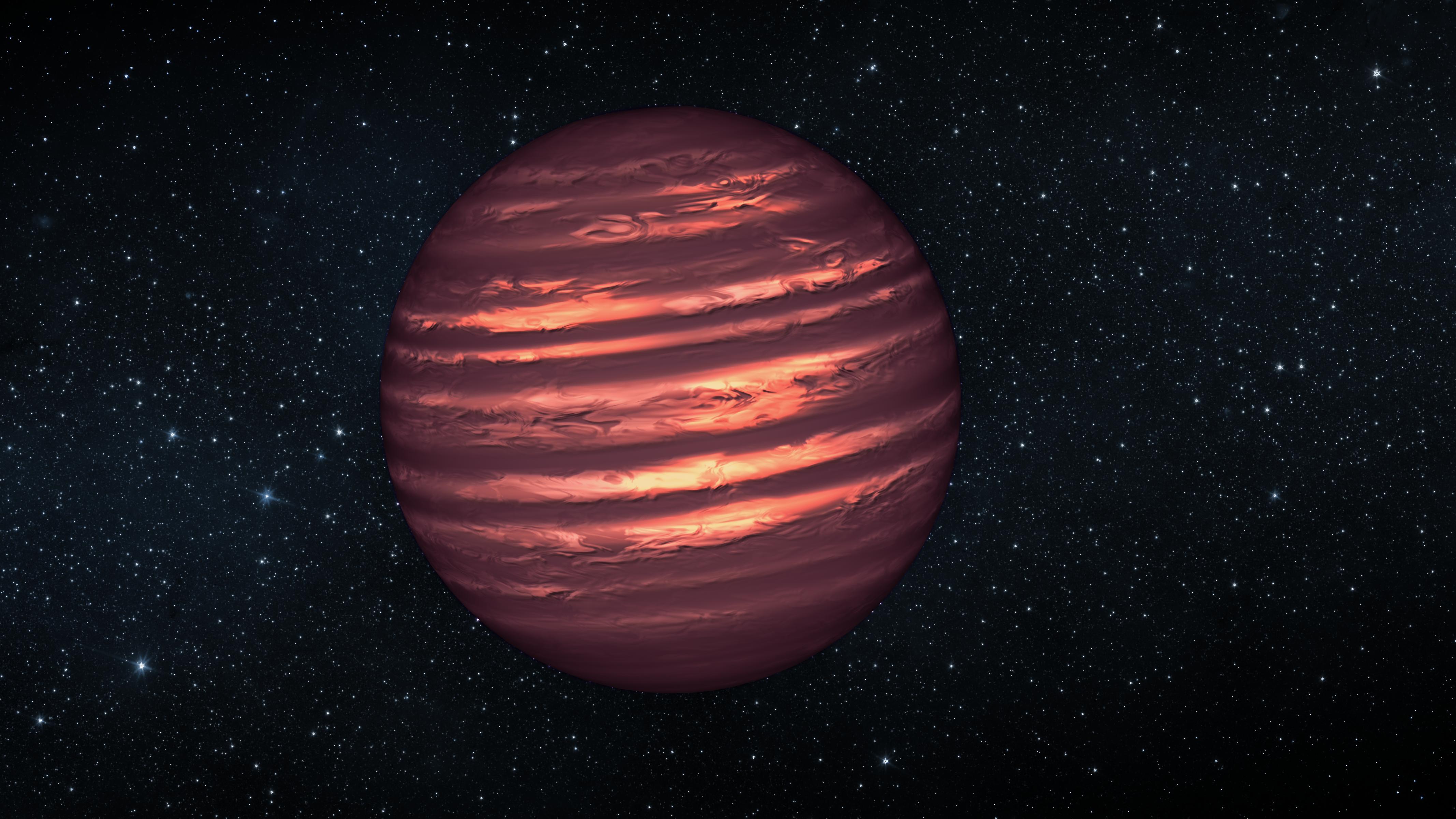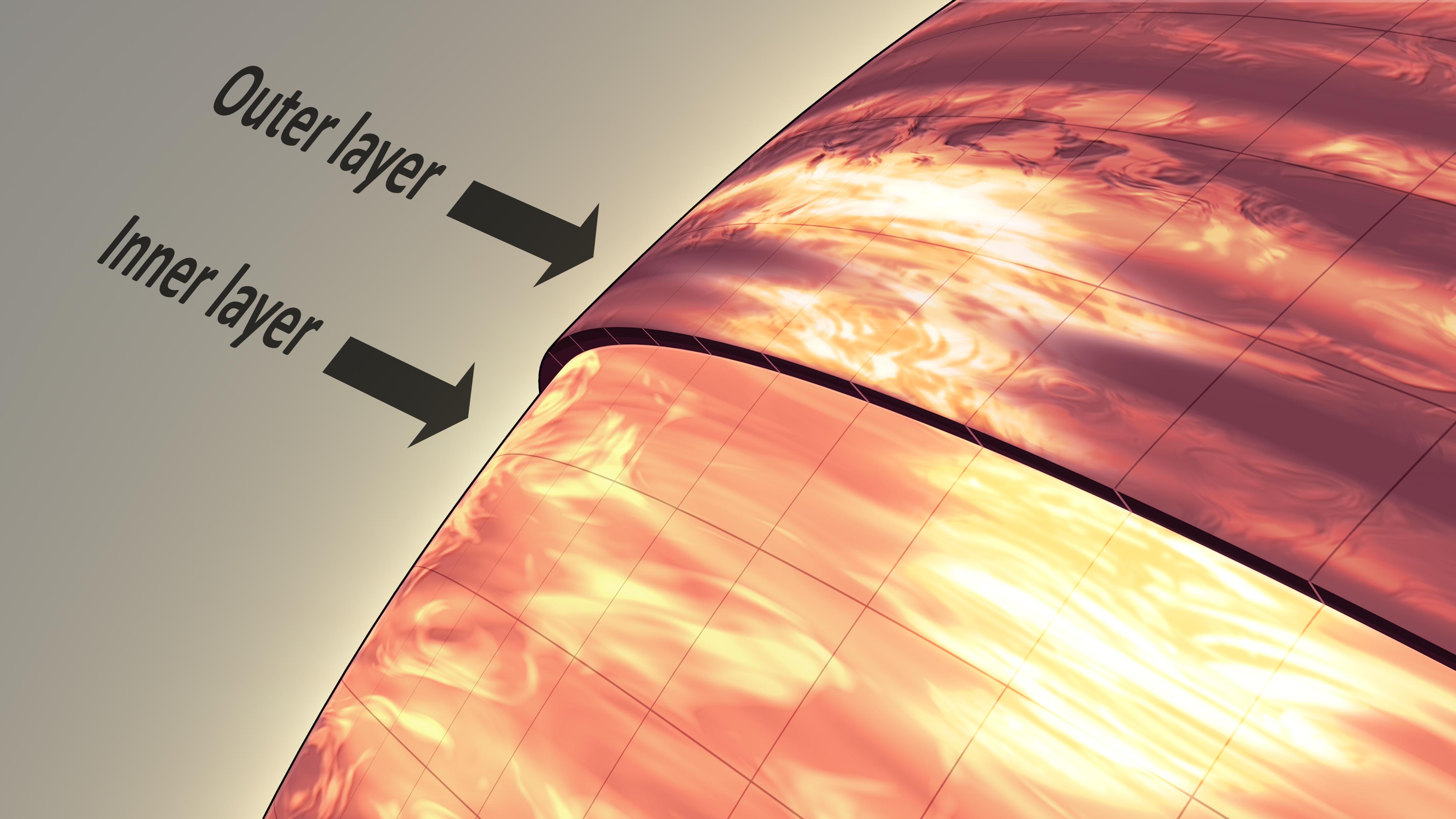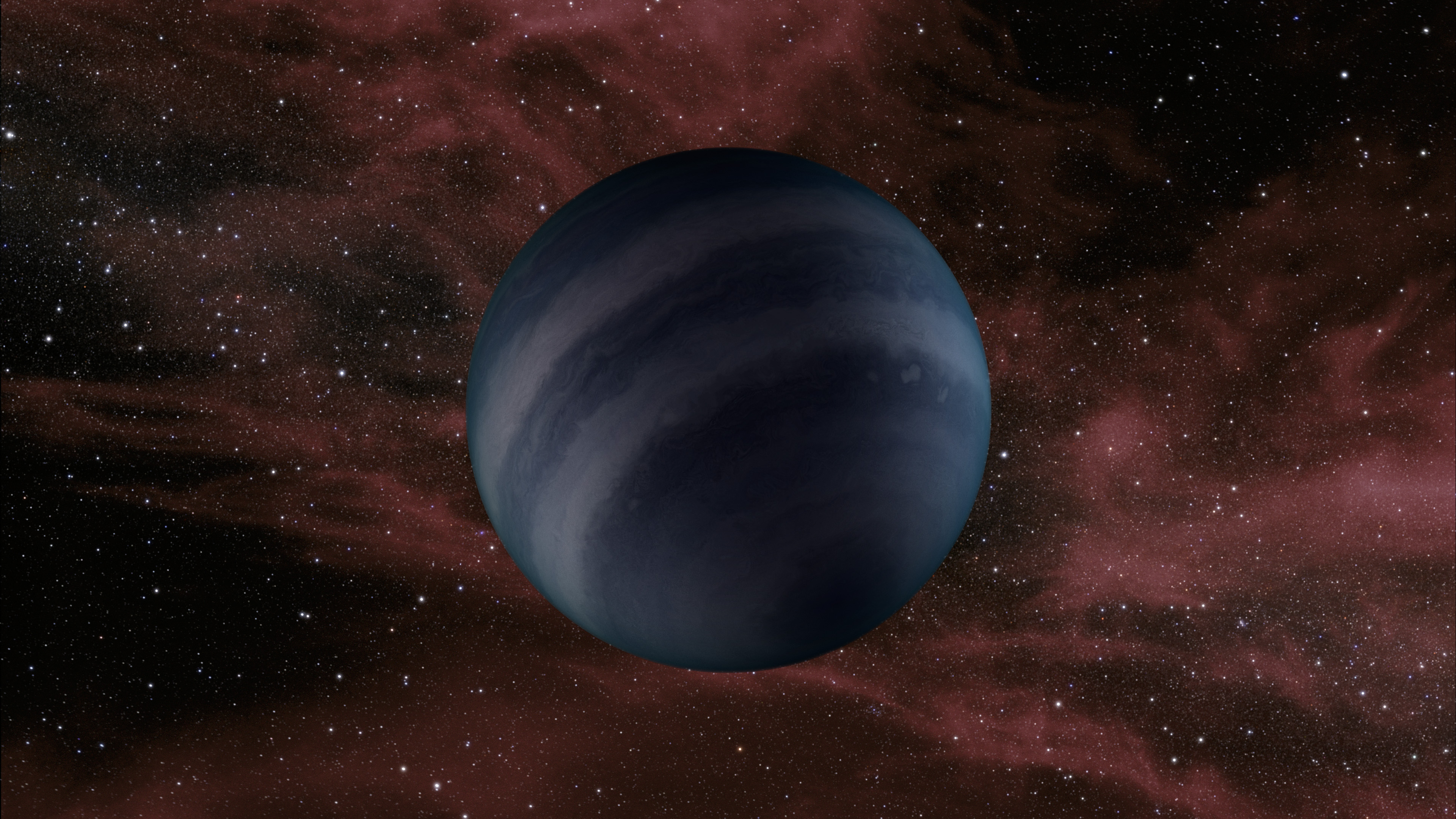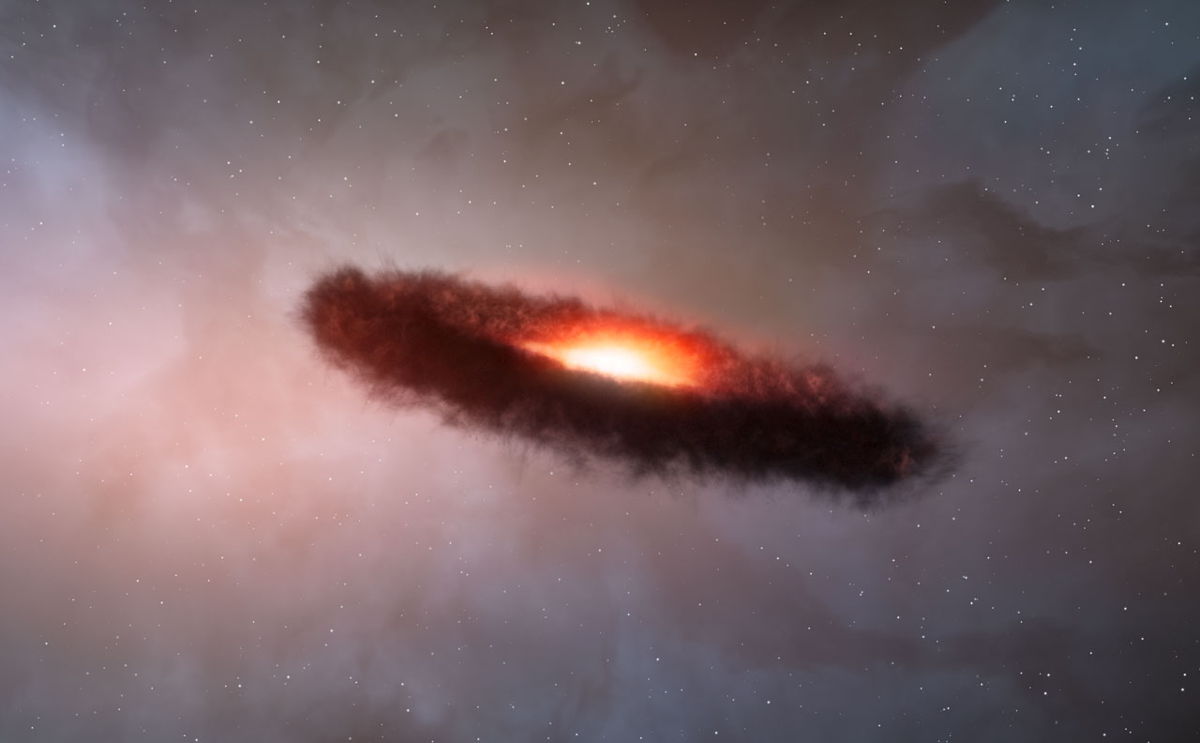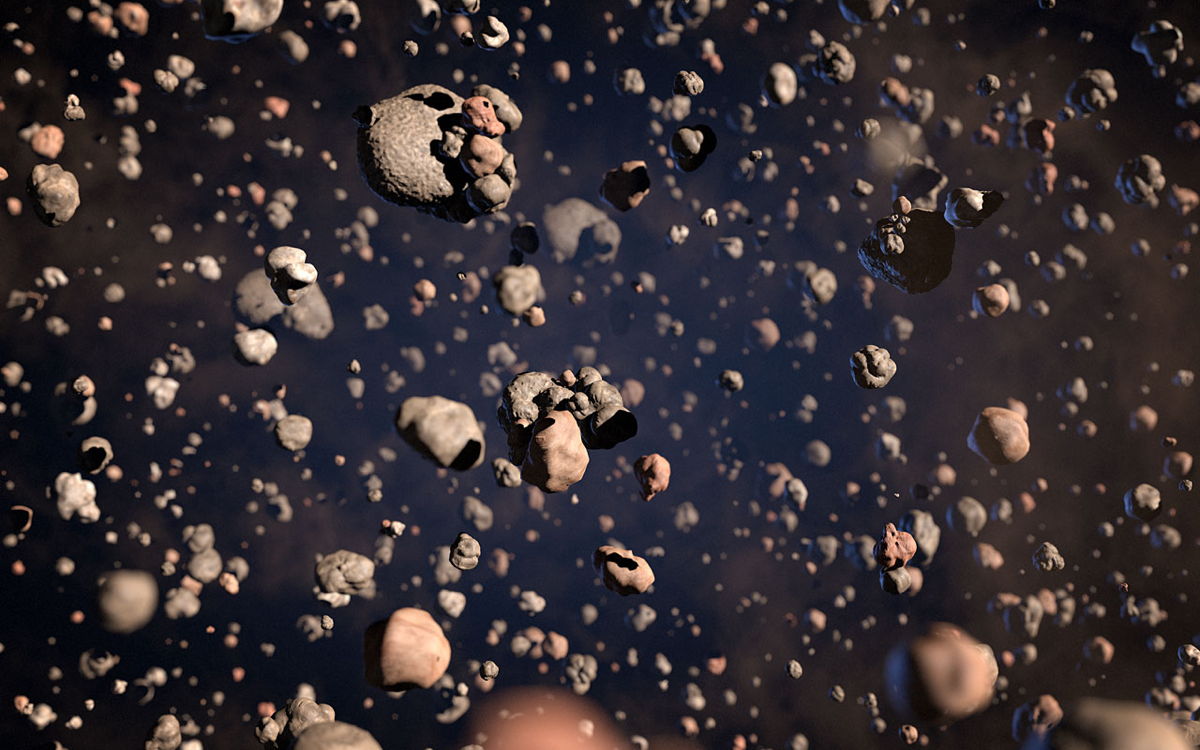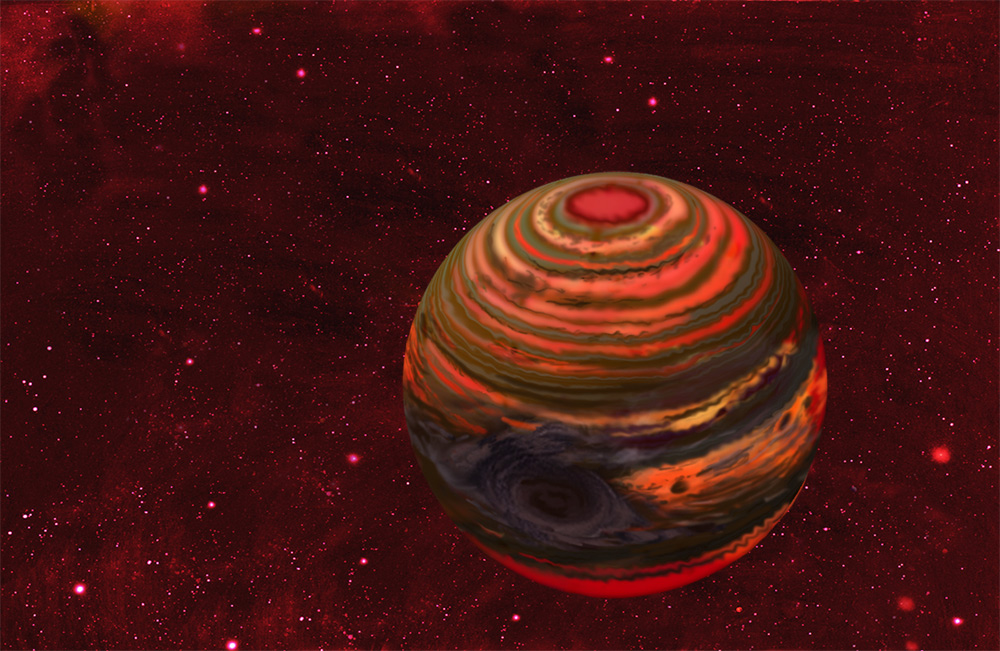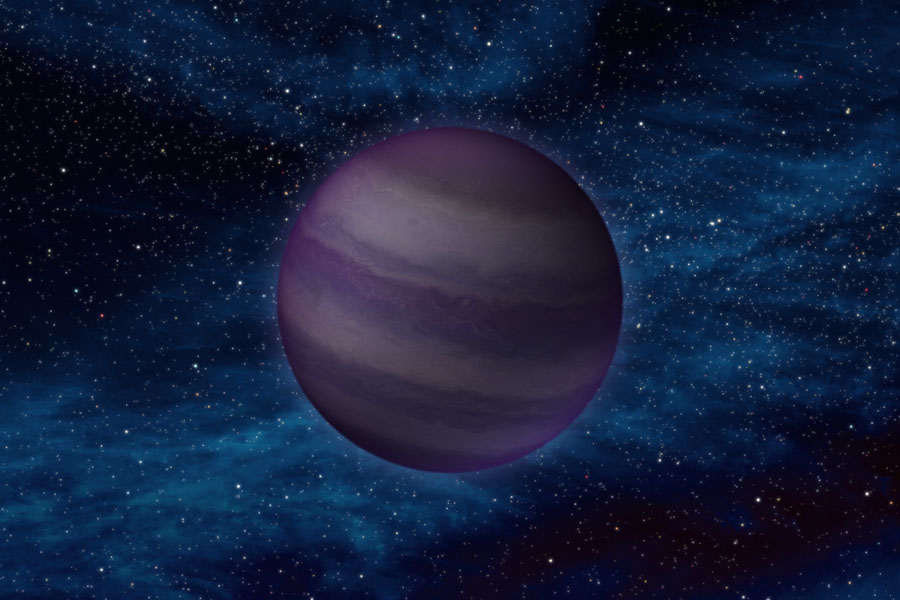Brown Dwarf Photos: Failed Stars and Stellar Misfits Revealed
Pair of Brown Dwarfs May Include Coldest Known Star
This artist’s impression shows the pair of brown dwarfs named CFBDSIR 1458+10. Observations with ESO’s Very Large Telescope and two other telescopes have shown that this pair is the coolest pair of brown dwarfs found so far. The two components are both about the same size as the planet Jupiter.
Small Brown Dwarfs Discovered by Subaru Telescope and Very Large Telescope
Brown dwarfs in the young star cluster NGC 1333. This photograph combines optical and infrared images taken with the Subaru Telescope. Brown dwarfs newly identified by the SONYC Survey are circled in yellow, while previously known brown dwarfs are circled in white. The arrow points to the least massive brown dwarf known in NGC 1333; it is only about six times heftier than Jupiter.
Brown Dwarf's Wild Weather
This artist's illustration shows the atmosphere of a brown dwarf called 2MASSJ22282889-431026, which was observed simultaneously by NASA's Spitzer and Hubble space telescopes. The telescopes' observations indicate this brown dwarf is marked by wind-driven, planet-size clouds.
Brown Dwarf's Cloud Layers
This artist's concept shows the brown dwarf 2MASSJ22282889-431026, which has a turbulent atmosphere somewhat similar to the giant planet Jupiter's.
Brown Dwarf Star Artist's Concept
An artist's conception of a free-floating brown dwarf, or failed star.
Cosmic Dust Disc Around a Brown Dwarf
This artist’s impression shows the disc of gas and cosmic dust around a brown dwarf.
Grains in the Disc Around a Brown Dwarf
This artist’s impression shows these grains of cosmic dust in the disc around the brown dwarf. Image released Nov. 30, 2012.
Breaking space news, the latest updates on rocket launches, skywatching events and more!
Violent Storm on a Brown Dwarf Star
Extreme brightness changes observed on a nearby tiny brown dwarf star may indicate a storm grander than any yet seen on an alien world, scientists say.
WISE Coldest Brown Dwarfs
This artist's conception illustrates what a Y dwarf, the coldest type of brown dwarf, might look like. Y dwarfs are the coldest star-like bodies known, with temperatures that can be even cooler than the human body.
Twin Brown Dwarfs
In this illustration, twin brown dwarfs orbit each other. Despite the name "brown dwarf", these objects cool and change over time, and therefore do not have a definitive color.
Join our Space Forums to keep talking space on the latest missions, night sky and more! And if you have a news tip, correction or comment, let us know at: community@space.com.

Space.com is the premier source of space exploration, innovation and astronomy news, chronicling (and celebrating) humanity's ongoing expansion across the final frontier. Originally founded in 1999, Space.com is, and always has been, the passion of writers and editors who are space fans and also trained journalists. Our current news team consists of Editor-in-Chief Tariq Malik; Editor Hanneke Weitering, Senior Space Writer Mike Wall; Senior Writer Meghan Bartels; Senior Writer Chelsea Gohd, Senior Writer Tereza Pultarova and Staff Writer Alexander Cox, focusing on e-commerce. Senior Producer Steve Spaleta oversees our space videos, with Diana Whitcroft as our Social Media Editor.

